How to Syndicate Your Blog Posts to LinkedIn for Traffic
Published by James Parsons • Content Marketing • Posted February 17, 2017 ContentPowered.com
ContentPowered.com
LinkedIn is an interesting social network, because it didn’t start out as a social network the same way most of the rest of the usual suspects did. They started out as a way for people to network with each other in a corporate and professional setting. There’s no typical news feed and no social flow the same way Facebook works, for example. They eventually added those kinds of interactions, but you’re still rather limited to the people in your circles, and the people in the circles of the people who share your post.
In a sense, it’s not so different from Facebook; you still have the word of mouth recommendations, you just don’t have EdgeRank doing its dirty work behind the scenes. LinkedIn is aimed at a more professional, less exploitative audience, and as such it’s a simpler algorithm and it’s easier to influence.
Do You Like Me? Y/N
LinkedIn’s algorithm is actually hilariously heavily weighted towards the simplest act of engagement of all; the like. When you post something on LinkedIn, it’s spread to your circle of connections. The more of those people who like it, the more of your own connections see it. At the same time, when one of your connections likes your post, their connections see it. It’s equivalent to Facebook’s old “Friend X liked this post” showing you something from someone you didn’t follow.
The interesting thing is that LinkedIn doesn’t factor time in nearly as heavily as Facebook and Twitter. The majority of the usage of LinkedIn’s blog syndication and article sharing engine is used for evergreen or semi-evergreen content. It’s all meant to show up in Google search and bring traffic to the profile of the freelancer, employee, or company posting the content. Since it’s not meant to be a short-lived viral surge, that lives and dies very quickly, LinkedIn doesn’t need to make posts decay very quickly.
The end result is that a post can get a lot of traffic from likes, and can stay circulating and “relevant” for an extended period of time without fighting against time decay like it would on Facebook. It’s excellent for seeding semi-evergreen or faux-evergreen content that continually circulates and pulls in new connections.
A Live-ish Example
A freelancer on Reddit shared their experiences with gaming the LinkedIn system. They have since deleted their original post, but thanks to the magic of Google Cache, you can see a screenshot of it here:
Essentially, what this guy did is simple. He wrote a really basic post about leaving his job and starting a social media consulting company. In it, he mentions that a like will help him out to get the word out about his new consulting business. It gives a personal incentive to like; help a guy out with just the press of a button, you don’t have to do anything else, right? Simple and easy.
Well, the likes pull double duty. They show the post to your connections, and they give his post more weight to keep circulating longer and be shown to more people.
His own network of connections wasn’t very large, though he doesn’t state exactly how large it was. He leverage what was probably a couple of hundred connections into a much larger audience. That one post ended up earning over 1,300 likes, which pushed out throughout a huge number of people. The post ended up with over 315,000 impressions on the social network.
For this one post, the fallout is pretty intense. He received over 2,700 visits to his profile, 200 connection invitations, and 65 emails or inmails on the site offering him business opportunities or projects. That’s a heck of a conversion rate for 2,700 views!
Of course, this is all a single freelancer exploiting the algorithm to get views and project offers. Things work a little differently if you’re an agency or brand trying to get the same sort of exposure. His post was personal and was able to exploit people’s drive to like as a form of congratulations, which isn’t really something a brand can do, at least not very often.
There is a way a brand can mimic this kind of success, but it involves coming at the problem from two angles; the post and the profile.
Optimizing Your Profile
The first thing you need to do is optimize your profile to increase views and increase the engagement of those viewers. Not only will this make you look more attractive from the bio field of your post, it will make people more likely to connect with you and offer you work.
- Normalize your title. For a freelancer, you can take a look what people around you in your industry are using. Making your title something creative and unconventional can make you stand out, but it does you no favors with the LinkedIn algorithm for search, so you want to be something a little more normal. “Professional Marketing Agency” or “Freelance Content Developer” are examples of more common titles, compared to something like “VP of Creativity.”
- Make use of keywords. Industry common keywords help you appear in search and catch the eye of people looking for that kind of thing in the people they connect with. Keywords can go in your personal headline, your summary, and of course your blog posts. Your summary is your biggest ally here; you can make a narrative tale of your exploits and skills, while still leaving your actual itemized skills list and awards list to their own sections.
- Set yourself to visible viewing. When you view a blog post, LinkedIn can either show the poster who browsed it or keep it anonymous. By showing that you browsed a post, you invite reciprocal views.
- Other minor tips.
Posts are where you really drive traffic, however, so let’s focus more on how you can syndicate posts and how you can use them to drive more traffic to your profile and your website.
Syndicating Posts on LinkedIn
The first thing to do is decide if you really want to syndicate posts or if you want to create original content for LinkedIn.
First, you need to understand what syndication is. Syndication is the act of posting the content verbatim – possibly with a minor introduction or CTA at the end – on another site. You post the blog on your site, then you copy and paste it into LinkedIn publishing.
The SEO pros among you probably winced, since syndication can be a very dangerous tool. Syndicating a post poorly can cannibalize SEO and traffic, and it can be the source of duplicate content penalties. LinkedIn may do it right, or they may not, so which is it?
As it turns out, LinkedIn acts a little strangely with syndication, specifically with the canonicalization tags, but it doesn’t really matter. Google appears to give preference to any site over LinkedIn when the content is duplicated, and doesn’t throw duplication penalties around because of it. In some cases LinkedIn isn’t even indexed.
So syndication on LinkedIn essentially just gives you the LinkedIn audience, without taking away from your Google-driven traffic or other social networks. It doesn’t eat away at your traffic, it opens you up to more traffic. Though it’s worthwhile to consider that the traffic from LinkedIn is going to be split between your LinkedIn profile and your blog post call to action.
By contrast, posting original content seems to suffer somewhat. Original content can still suffer from Google not giving LinkedIn a ton of preference, probably due to how much thin and barely-useful content is published on the social network. It’s like using Facebook Notes, with a little bit more influence to back them. Original content also takes more effort to produce, and it’s difficult to syndicate in the other direction. Overall, despite my bias towards original content, I would actually say syndication is the better option. LinkedIn can get you a lot of traffic, but it’s not good enough to warrant entirely original blog posts, at least not all the time.
When you syndicate a post, you should add a little something to it. You can change the headline if you want, though it doesn’t necessarily seem to matter, as you’re not competing with yourself directly. I would only do so if you have a secondary headline you want to use and can’t write another post about the subject.
Instead, I would add two things. The first is a link up at the top that says something like “this post was originally published on X” with a link to the original post on your blog. This helps eliminate confusion about canonicalization that LinkedIn might cause. The second is a call to action at the bottom of the post, asking for likes on LinkedIn itself. This LI-specific call to action will help earn your post likes which, as we’ve seen above, will give it a lot of extra circulation and live.
So what kind of posts do you want to syndicate? You shouldn’t syndicate everything you post, particularly if you have a very active blog. You want to primarily syndicate posts that are as close to evergreen as possible, and those that have proven themselves to do well on your blog and on other social networks. The more viral the post is, the easier you will find it to earn likes, and the more it will linger. Meanwhile, the more evergreen it is, the less out of place it looks when someone stumbles on it a year later.
This is the primary problem with the Redditor’s post up above; it talks about a specific date range, the start of 2017, and about a specific event, quitting his job. If someone stumbles on that post a year from now, it’s out of date and they’re less likely to like it and give it more circulation. They might also check his profile and see, a year from now, that his business venture failed and he’s now looking for new employment. The cognitive dissonance hurts his post and his position.
Additionally, you should avoid posting anything too personal. This goes without saying for brands, but for individuals and freelancers it rides the line between social network and business tool. LinkedIn is a tool first, not a Facebook clone, and as such it has less tolerance for overly personal or non-business-focused content. A post about religion, a post about politics, a post about lunch; these aren’t going to perform well. People are on LinkedIn to learn about business opportunities and marketing strategies, so that’s what you need to give them.
You can also add additional hooks for getting people off LinkedIn and onto your blog, which is particularly useful if you don’t care about people engaging with your brand on the social network. One idea is partial syndication.
Partial syndication is the idea of taking essentially half of a post and syndicating it, with a link back to the full content on your site. You’re giving previews to LinkedIn users, not the full thing, so you’re trying to hook them. For example, a top 10 list might publish six of it’s ten points on LinkedIn, and offer the rest on the blog.
This is an extension of the eBook marketing concept of expanded content, and can be used in conjunction with it. Write a top 100 list, publish the full 100 as a paid ebook on Amazon, publish a limited selection of 50 of them on your blog, and publish a syndicated version of 25 of those on LinkedIn. You escalate people up the chain in hopes that they go from LinkedIn connection to blog reader to converted customer because of the value of the post.
The downside of this emphasis is the lack of likes. When you’re trying to get people off LinkedIn, they’re less likely to give you LinkedIn engagement, which hurts your circulation. As such, you need to find the right balance between the two.
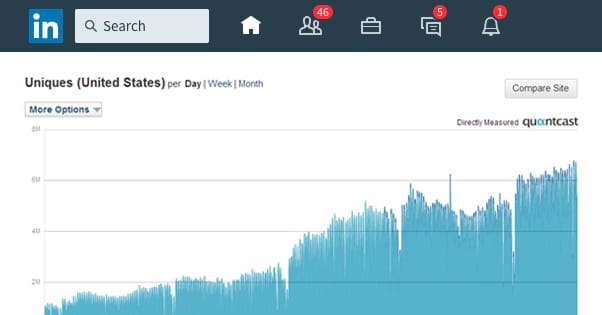
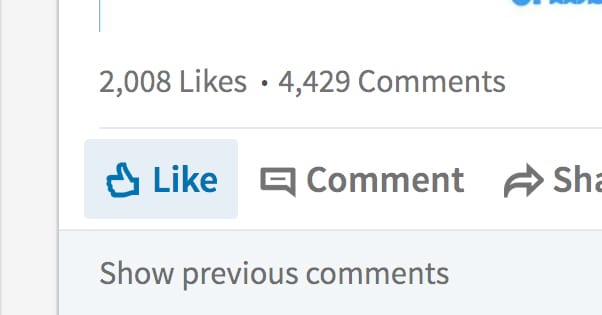
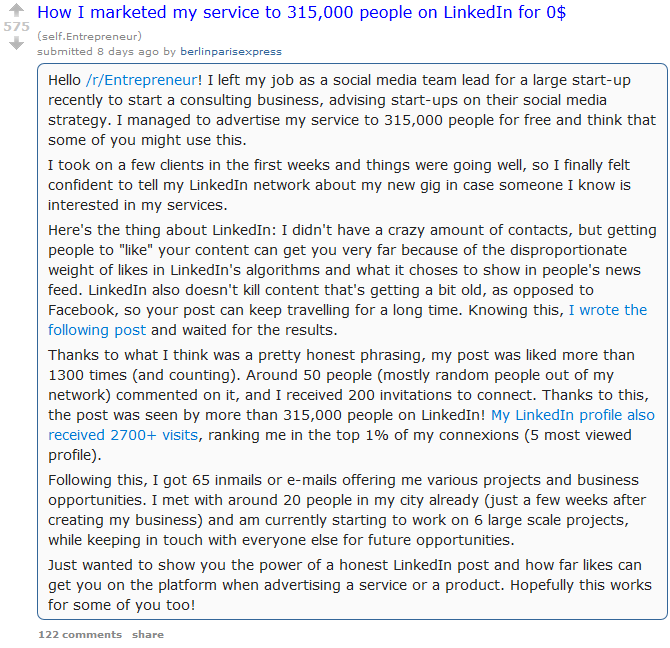
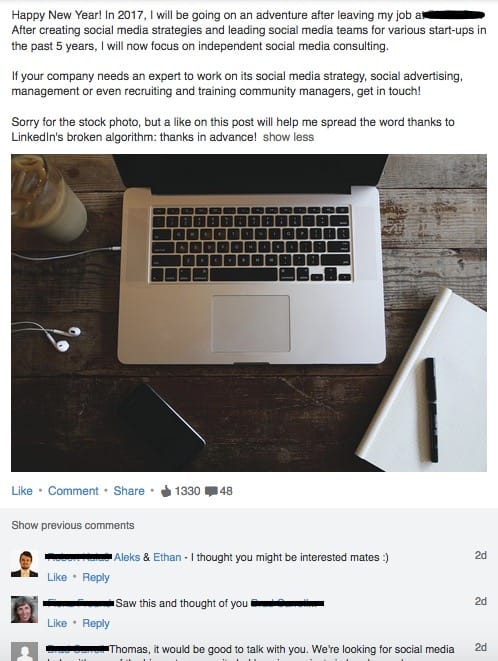
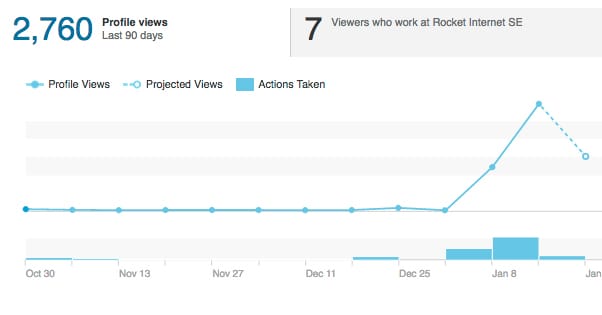
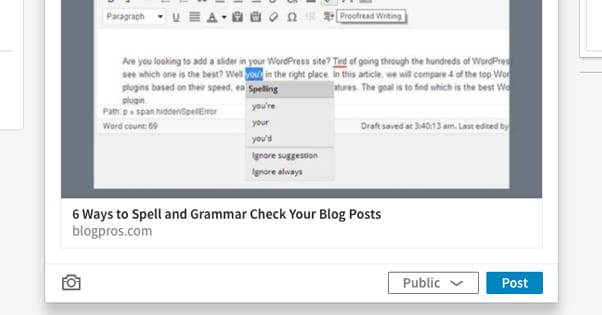





How is this different/changed given all the changes to Google and LinkedIn. Do you still recommend the same strategy?
Hi Kyle! The primary difference in 2020 is that LinkedIn’s API is now deprecated, so any sharing will most likely have to be done manually, unless you have a very specialized setup. Otherwise, LinkedIn is still very valuable for the traffic it provides, especially if those posts get a fair amount of likes within the LinkedIn network.